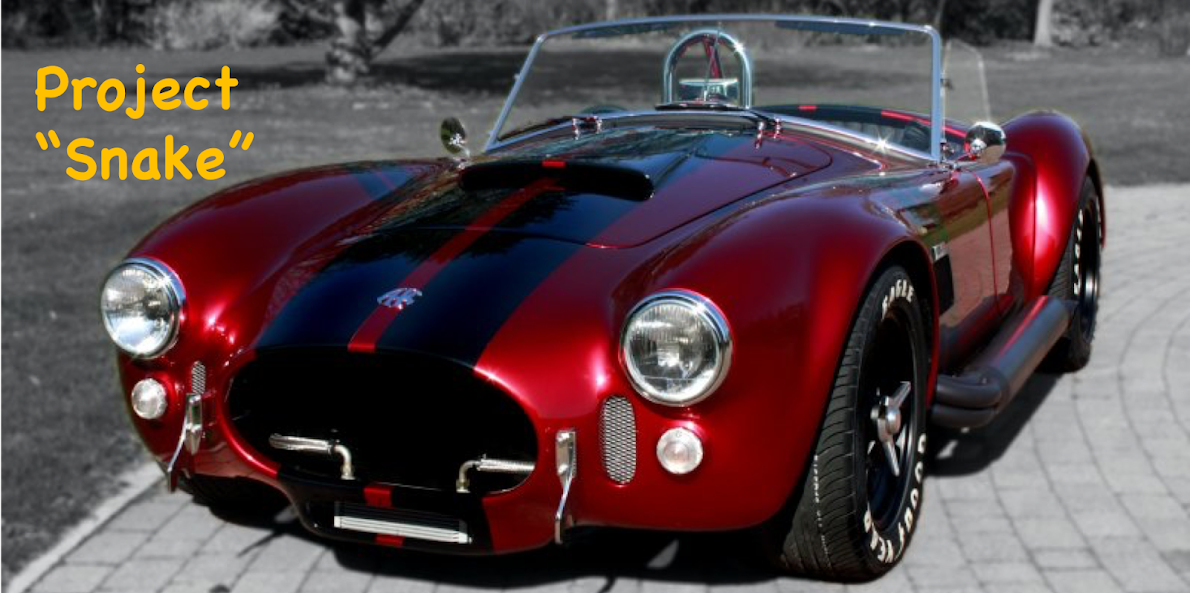Having come up with a suitably OTT method of fixing the brake lines. The next stage was to plan the routing for the front brake pipes and the clutch pipe.
The brake lines will be formed from 3/16" dia pipe while the general consensus is that the clutch pipe is formed from 1/4" dia pipe.
I wanted to keep the pipe runs as neat as possible with both pipes running parallel. I also wanted to plan out where to place my bespoke pipe clips. There is no guidance on the fixing of brake and fuel lines within the IVA manual. The only reference to a distance between fixings is for electrical cables/wires, which according to Clause 8 of the General Construction section of the IVA manual, "must be...secured at intervals of at least every 300mm...". The general view amongst the kit car community is that this is applied to the fixing of brake and fuel lines as well.
Having done all that I basically followed the AK suggested routing (as have most other AK builders), although as I appear to have too much time on my hands, I modelled the pipe routing and clip positions in CAD. One slight change I did make, however, was to adjust the suggested position of the 3-way brake union on the offside chassis rail to give a slightly longer pipe length to the connection with the offside flexible brake hose; most other builders have commented that this short length of pipe is a pain to bend given the proximity of the brake fittings to the required bend and I figured that allowing a longer length of pipe might facilitate the forming of the necessary bends.
 |
| Pipe routing - clips at less than 300mm centres and adjusted position of the 3-way union |
The plan is to run the brake and clutch pipes to some bulkhead connectors which will be held in place with a bracket mounted on the top of the offside chassis rail. The clutch pipe will also terminate with a bulkhead connector, secured by a bracket, on the nearside chassis rail, for the flexible hose to the clutch slave cylinder to be connected to.
I acquired all the necessary brake fittings from Automec. The bulkhead fittings are M10x1.0mm fittings (HU106) with brass locknuts (LNB2) and M10 female fittings (HU2A) for the 3/16" brake pipes and 7/16"x20 fittings (HU141) and 7/16" female fittings (HU4A) for the 1/4" clutch pipe.
Bizarrely at the time I bought the fittings Automec did not supply a brass locknut for the 7/16" bulkhead fitting - they do now, part LNB4 for anyone interested. I spent many nights on the internet trying to get hold of brass 7/16" locknuts to no avail; eventually, I tracked down some steel jam-nuts on eBay but might upgrade to the brass lock-nuts for aesthetics at some point!
 |
| Bulkhead connectors - 7/16"x20 for clutch at the top and M10x1.0mm for brakes at the bottom |
The basic configuration of the proposed bracket to secure the bulkhead fittings was "borrowed" from Stuart Holden's AK build blog. I modelled the initial bracket in Fusion 360, which has a cunning function allowing you to generate a flat pattern for a sheet metal design, which takes into account the radius of all bends etc. I also went a bit overboard (a recurring theme) and modelled the brake fittings. This turned out to be just as well, as I could see from the CAD model that, with my original dimensions, there would be no room to secure the three female unions on the mid-part of the bracket. A slight adjustment to the dimensions and the problem was solved!
 |
| CAD model of brake/clutch pipe bracket |
 |
| Drawing of sheet metal flat pattern |
I cut out the drawing of the flat pattern and stuck it onto a piece of 2mm sheet steel. I used an angle grinder with a cutting disk to cut the steel close to the pattern and then used a combination of bench grinder, grinding disk, belt sander and various metal files to get to the final shape.
I centre punched the location of all the holes and drilled out the 5mm dia holes for the mounting bolts and 5mm pilot holes for the fixings. I then bent the three tabs to 90 degrees using a vice mounted metal brake (another homemade creation!). The fixing holes were then opened up with a stepped hole drill; 10mm for the brake fixings and 11mm for the clutch fixing.
 |
| First cut-out with the angle grinder... |
 |
| ...following by a variety of sanding/grinding/filing implements to get to final shape |
 |
| Mounting/Pilot holes drilled and fold lines scored |
 |
| Ready for bending using my DIY metal brake |
 |
| Tabs bent up and fixing holes drilled out to size |
 |
| The finished article - looks just like the CAD model! |
I treated the finished bracket to some candy red powder coat before marking up the fixing position on the chassis rail, drilling and tapping for some M5 bolts and securing in place with some stainless steel Allen-head M5x8 bolts.
 |
| Bracket after powder coating... |
 |
| Mounting hole locations marked up on chassis prior to drilling and tapping |
 |
| Bracket secured in place with M5x8 bolts... |
 |
| ...and complete with bulkhead fittings. |
Now it's time to start running some brake lines!






















